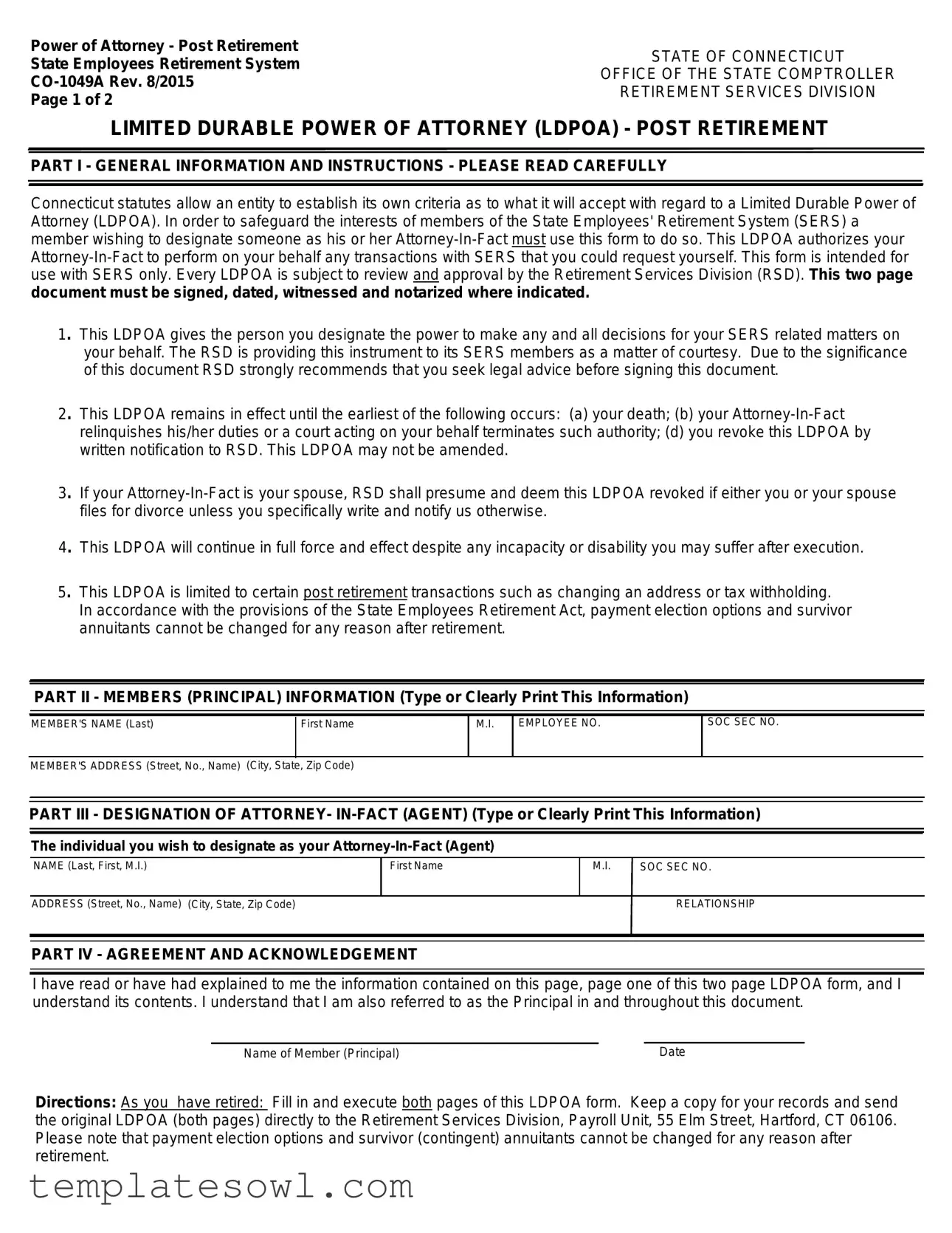What is the CO-1049A form?
The CO-1049A form is a Limited Durable Power of Attorney (LDPOA) specifically designed for members of the State Employees Retirement System (SERS) in Connecticut. It allows you to designate someone as your Attorney-In-Fact, giving them the authority to manage certain retirement-related transactions on your behalf post-retirement.
Who can I designate as my Attorney-In-Fact?
You can choose anyone as your Attorney-In-Fact as long as they are capable of making informed decisions. This could be a family member, a friend, or even a legal representative. The important factor is that the person you choose should understand your interests and be trustworthy to act in your best interests regarding your retirement matters.
What powers does this form grant to my Attorney-In-Fact?
This form gives your Attorney-In-Fact significant powers regarding your SERS transactions. They can respond to requests for information, change your address or tax withholding, and designate a beneficiary for remaining contributions after your death. However, certain decisions, like changing payment election options, cannot be made after retirement.
How long does the power of attorney remain in effect?
Your Limited Durable Power of Attorney remains effective until one of several conditions occurs: your death, a formal revocation by you, your Attorney-In-Fact resigns, or a court terminates the authority. It's important to note that this LDPOA does not expire automatically just because you become incapacitated.
Can I revoke the CO-1049A form?
Yes, you can revoke the CO-1049A by providing written notice to the Retirement Services Division. It’s essential to follow the proper procedure to ensure that the revocation is acknowledged and any transactions made after your notification are not authorized by your Attorney-In-Fact.
What happens if my Attorney-In-Fact is my spouse and we get divorced?
If your Attorney-In-Fact is your spouse, the form is automatically deemed revoked if either you or your spouse files for divorce. This ensures that the authority does not continue under circumstances that may be contrary to your wishes. If you want it to remain enforceable post-divorce, you must inform the Retirement Services Division in writing.
Are there any limitations to the powers granted?
Yes, while your Attorney-In-Fact can manage many affairs related to your SERS benefits, certain limitations apply. For example, they cannot change payment election options after your retirement. Furthermore, your Attorney-In-Fact cannot receive checks or deposits in their name; any payment must be directed to you directly.
Do I need to have the form notarized?
Yes, the CO-1049A form must be signed, dated, witnessed, and notarized. This additional layer of verification helps ensure the authenticity of the document and protects against misuse.
Should I seek legal advice before completing this form?
It is strongly recommended that you seek legal advice before signing the CO-1049A form. Given the significance of granting someone authority over your retirement matters, understanding the implications is crucial for your peace of mind and financial security.


